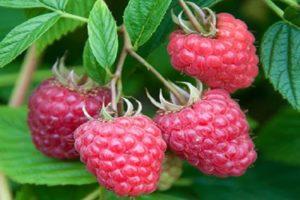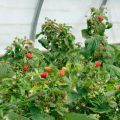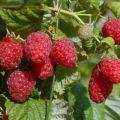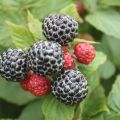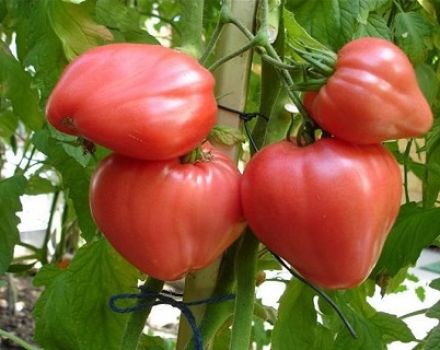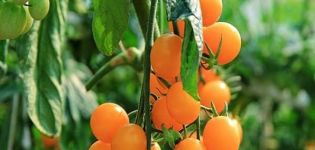Planting and caring for Tibetan raspberries, cultivation and breeding methods
Berries of Tibetan raspberry bushes stand out for their uniqueness of taste, planting and caring for the plant do not differ from other varieties of raspberries. Even inexperienced gardeners can take up the cultivation of crop varieties, the plant is resistant to diseases and can tolerate low temperatures.
Content
Culture features: the pros and cons of the variety
Tibetan strawberry raspberry, very often referred to as seductive raspberry, has the following description of the variety:
- Ball-shaped berries.
- Grows on a shrub up to 1 meter high.
- The leaf of the plant is oblong in shape and outwardly resembles strawberry. The stems of the bush have a soft texture and are woody only at the root.
- The stems of the shrub are covered with thorns, which can be seen even on the back of the leaves.
- Plant inflorescences up to 5 cm.
- Berries sometimes reach up to 5 cm in size, bright red.
The ripening period of the berries starts from early June to the end of September.
| pros | Minuses |
| Taste qualities of a berry, there are notes of pineapple and blackberry | Not suitable for transportation |
| Berries of attractive appearance | Roots spread quickly and displace other types of crops |
| Shrubs can act as a decorative decoration | The shrub is weak and can be damaged by the influence of natural factors |
| It does not require special care | A large number of thorns |
| Tolerates low temperatures |
Strawberry raspberry has a large number of advantages in the description, but the variety does not tolerate storage. The berry can be grown in any conditions, and is undemanding to the location of neighboring crops in the garden.
Rose-leaved raspberry in landscape design
Tibetan raspberries have an attractive appearance and are often used for decorative purposes. Shrubs are used in landscaping to decorate compositions, stone gardens and alpine slides.
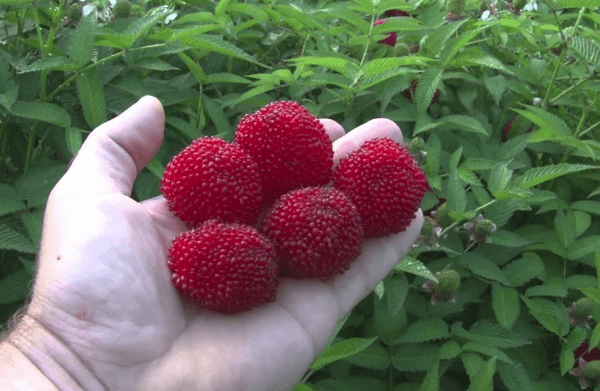
The plant is susceptible to creating the required shape and retains its green color until the first frost. The berries go well with the attractive appearance of the leaves and contribute to the decoration of the site. The shrub has a pleasant smell during the flowering period.
It is not recommended to use shrubs for a living fence, as the presence of thorns and a fast growth rate can cause difficulties during maintenance.
How and when Chinese raspberries bear fruit
The berry in the first year after planting bears fruit to an insignificant extent, but annually, as the bush strengthens, the crop yield increases. Fruits appear in mid-July, raspberries ripen unevenly, depending on the region in which they grow. In an area like the Moscow region, the variety bears fruit until the first frost.
In the first year after planting, the berry variety begins to bear fruit in mid-August. It is recommended to pick berries with great care, not putting them in a deep container.
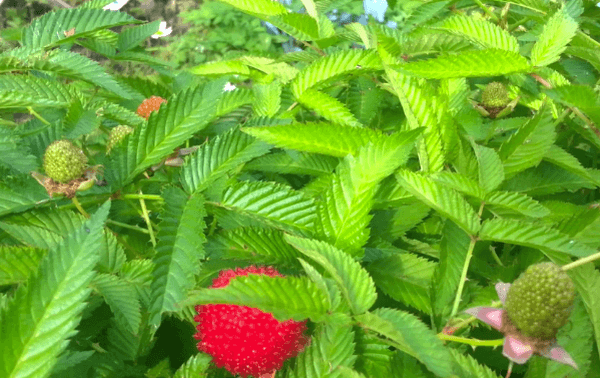
Reproduction methods
Rose-leaved raspberries have individual characteristics of reproduction, therefore, in order to get a harvest, you need to know how to plant Tibetan raspberries correctly and with what planting material.
Cuttings
The use of cuttings as planting material allows you to plant the required number of bushes. To obtain planting material, young shoots are taken and cut from the top and bottom by 20-25 cm, the leaves are removed, except for the top two. The cuttings are dipped into a growth stimulator for a day. Then the planting material is planted in the soil and covered with a film. After rooting, the planting material can be planted in open ground.
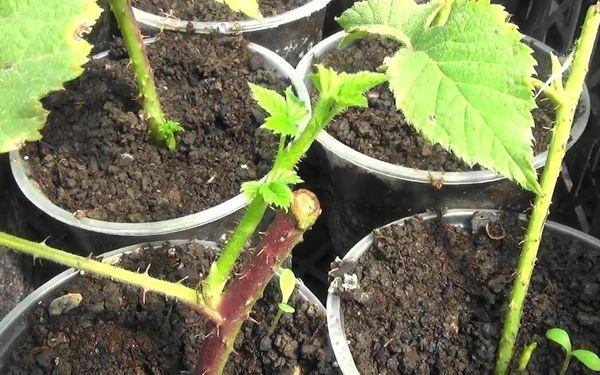
Rhizome processes
The description of this method of breeding raspberries is the simplest and is often used by gardeners. For reproduction, it is necessary to choose a root shoot that is the most developed and located far from the mother. Using a shovel, it is necessary to dig from four sides and carefully, without removing the earth, remove it from the ground and transplant it into the prepared hole.
By dividing adult bushes
This method is often used in the fall. For planting, it is necessary to divide an adult bush with a shovel in the area of the root neck into parts. Each part is placed in a pre-fertilized pit and buried in earth. In order for the rosaceous variety of raspberries to quickly recover in a new place, it is necessary to choose a plant for planting 5 years old.
Seeds
The Chinese hybrid is rarely propagated by seeds. However, this method is possible and is most often used to breed a new variety, but not in garden plots, since berry seeds require a special processing method and are very susceptible to diseases.
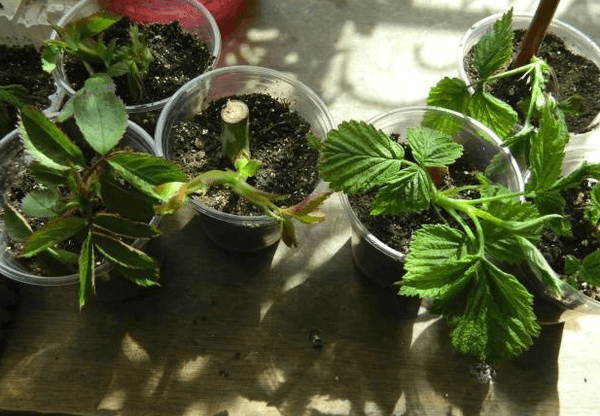
In order to independently prepare planting material in the form of seeds, you must:
- Pick berries that are overripe but show no signs of decay or damage.
- Using a flat dish, spread the berries and crush them gently. Leave in this form for several days, on top of the abscess with a gauze cut.
- Using a fine sieve, rinse the seeds with plenty of clean water.
- The remaining seeds must be laid out on a cloth and dried.
- The seeds are placed in a container of sand and placed in a cool place. The vegetable section in the refrigerator is suitable.
After 2-3 days, containers with sand are placed on the windowsill, and the first shoots appear within two to three weeks. This method of growing a crop is very laborious and often results in the death of the shoots.
Planting strawberry raspberries on the site
Like any type of crop, Chinese raspberry has some characteristics, so planting and care are carried out in a timely manner and are the key to the harvest.
Disembarkation dates
A suitable period for planting in the ground is from September 20 to October 15. Tibetan raspberry hybrid will be able to recuperate and prepare for the winter period.
Optimal landing site
The shrub planting site should be sunny and have slight hills and slopes. The place of the raspberry tree should not accumulate water and be located at a distance from other crops. This will prevent all nutrients from being consumed by the raspberry root system.
Important.In order for the plant not to damage the root of other crops, it is necessary to dig in profiled sheets around the perimeter, which prevent the growth of the root.
Required soil composition
The plant is not too demanding on the type of soil; for development and harvest, it is necessary to choose a loose one with neutral acidity. The soil should be moderately fertile and contain sand.
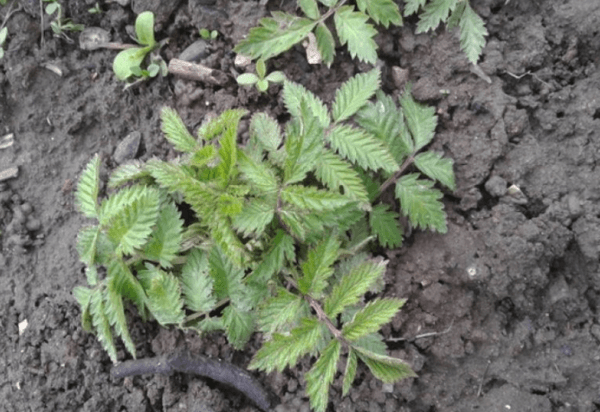
Sapling planting technology
Cultivation of a culture from seedlings is carried out using the following technology:
- seedlings must be planted in even rows for comfortable care and harvesting;
- the distance between the rows is at least 1 meter;
- the distance between the seedlings is at least 50 cm;
- the depth of the hole is at least 30 cm.
The height of the seedlings should not be more than 40-50 cm.
How to care for a Chinese berry
A perennial care raspberry variety is not too different from other varieties of berries. For the normal development of plants, it is necessary to timely fertilize and monitor soil moisture.
How to water
For the harvest, it is recommended to water the plant daily. Watering must be carried out in the evening after sunset, water is distributed directly to the area of the root system. One adult bush should consume at least 6 liters of liquid.
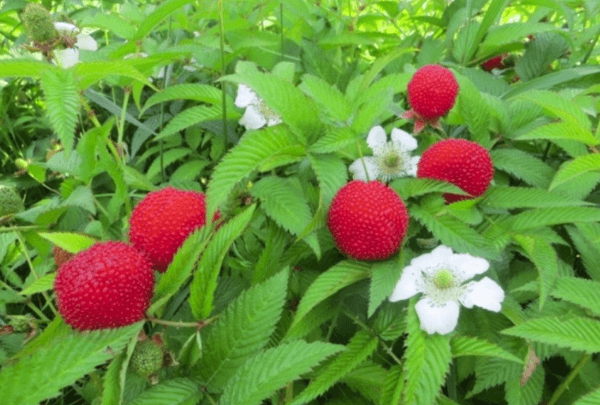
If the culture is located in a place where excess fluid accumulates, it is recommended to drain it. In the absence of watering, the plant will not die, but the berries will become small and will crumble without ripening.
Top dressing
In order to carry out full care of the crop, it is necessary to saturate the soil with all useful components. Raspberries consume a large amount of nutrients, so it is recommended to apply fertilizers twice a year:
- Spring feeding is carried out in the first month immediately after the snow melts. It is necessary to scatter ammonium sulfate over the territory of the raspberry grove, which, with moisture, will enter the location of the roots.
- In the autumn period, potassium sulfide can be used as a fertilizer, diluted with water or crumbled dry directly into the area of the root system.
- Organic fertilizers can also be used in the fall.
In order for the plant to take all the necessary components after fertilization, the soil should be covered with a layer of humus or peat.
Pruning
The plant does not require regular pruning; all damaged stems are removed at the end of the season. Before the onset of the first frost, it is necessary, using a sharp pruner, to remove all the stems, regardless of the age of the culture, leaving small shoots no more than 4 cm above the ground.
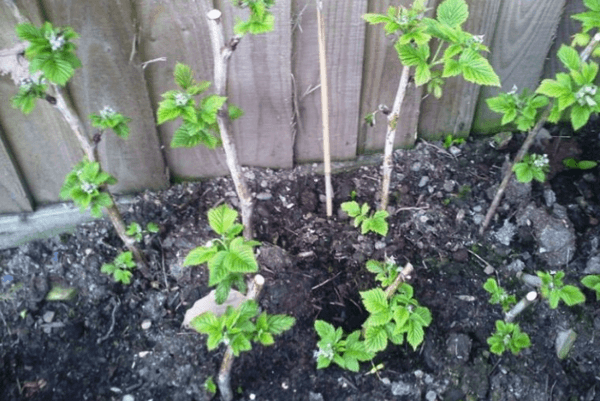
Also, during the period of flowering and ripening of fruits, it is necessary, using sharp scissors, to eliminate all branches of the shrub that do not bear fruit and are damaged. If the culture acts as a landscape addition, it is necessary to regularly give the shrubs the required shape and size several times a season.
Raspberries are distinguished by sharp thorns, therefore, for the convenience of harvesting, it is necessary to regularly remove shoots and make passes between plantings.
Loosening and mulching the soil
Proper maintenance requires regular loosening of the soil. This procedure is carried out carefully in the area of the root system. Raspberry roots are located in the top layer of the soil, therefore they are quickly damaged.
To eliminate weeds, the right solution is to remove the vegetation by hand. In order to prevent weeds from appearing, it is necessary to use mulching with peat. The mulch layer should be renewed regularly to reduce the risk of pest infestation. It is not used as mulch for needles, which can increase the acidity of the soil.
It should be remembered that the bushes have large thorns that break off, therefore, when caring for the crop, it is necessary to work in garden mittens.
Diseases and pests: control and prevention
Raspberries belong to a crop that is easy to care for, however, like any type of plant, the berry is often affected by pests. Also, in the absence of proper care, there is a risk of the formation of diseases that lead to the depletion of shoots and can lead to complete death.
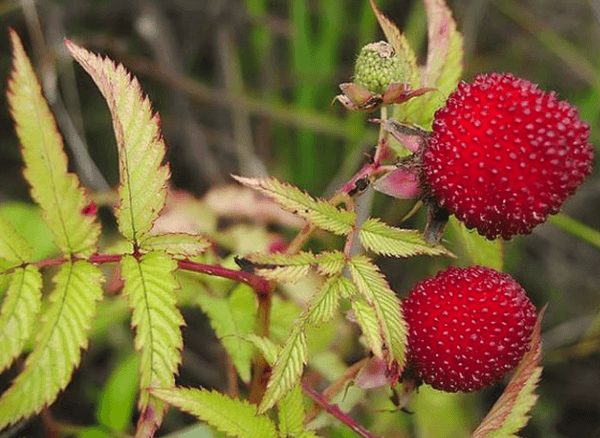
Among the common diseases and pests, it is necessary to highlight:
| Problem | Characteristic | Treatment |
| Raspberry-strawberry weevil | Appears on the leaves and inflorescences of the plant. Leads to wilting and destruction of buds | "Actellik" in early spring. Plants are sprayed with a solution until inflorescences appear. |
| Raspberry beetle | Destroys berries and causes rot | Fitoverm, used when the first symptoms of the pest appear |
| Aphid | More often affects young shoots and leaves. After emergence, it secretes a specific sticky liquid, which leads to wilting and death of the plant. Also, the sticky liquid reduces the supply of oxygen to the leaves, which slows down the development of young leaves. | Soap solution, processed until the problem disappears completely |
| Anthracnose | Light spots appear on the leaves of the plant, which quickly increase and affect the culture | The damaged parts of the bush are removed. Plants are treated with a solution of copper sulfate |
| Root cancer | It affects the root system and leads to a gradual death of the plant | The damaged areas of the root are removed, the cut sites are treated with copper sulfate |
| Powdery mildew | Most often appears on foliage in the form of yellowing and twisting | The damaged areas of the plant must be removed. Treat the remaining shrubs with Topaz |
| Rust, chlorosis | The appearance of brown spots on the foliage, which gradually lead to the drying out of the plant | Not treated. When such symptoms appear, the plant must be destroyed. |
In order to reduce the risk of diseases and pests, the following prevention methods must be followed:
- timely apply fertilizing that strengthens the plant;
- do not plant cuttings in places where a culture with similar types of diseases grew before (common raspberries, strawberries, blackberries);
- regularly remove weeds;
- destroy pests on other crops growing in the same area;
- monitor the amount of moisture, excessive moisture leads to the appearance of putrefactive bacteria;
- eliminate dry leaves and branches.
Also, a method of prevention is considered to be regular spraying in the spring with special preparations until leaves appear on shrubs.
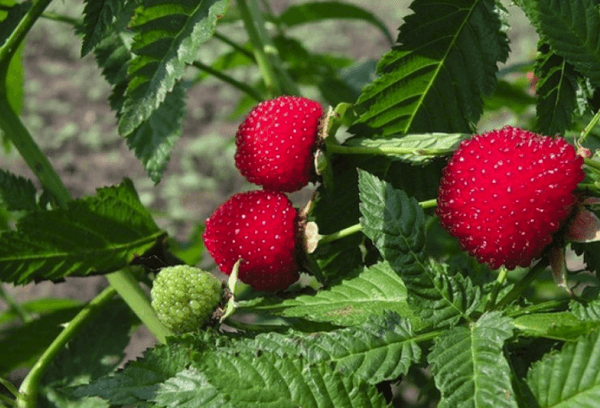
Wintering
Rose-leaved raspberries require knowledge from the gardener not only how to properly care for the crop, but also ensure proper wintering. Despite the fact that the plant can withstand low temperatures, this can lead to weakening of the root and in the future to the death of the bush. After the autumn pruning, it is recommended to insulate the shrubs with sawdust and fallen leaves. It is necessary to additionally cover with snow.
If the culture grows in warm regions, the raspberry tree is covered with spruce branches or fallen leaves.
Outcome
The raspberry hybrid has an attractive appearance and taste, not like the usual berry growing in every garden. The berries are large in size and have a bright red color. The culture is used as a decoration for the garden and landscape compositions, retains the shape of a bush and attracts attention with its large size and bright berries. The plant does not require any special care and can bear fruit for a long time. When planting a Chinese raspberry hybrid, the grower will harvest during the summer.

